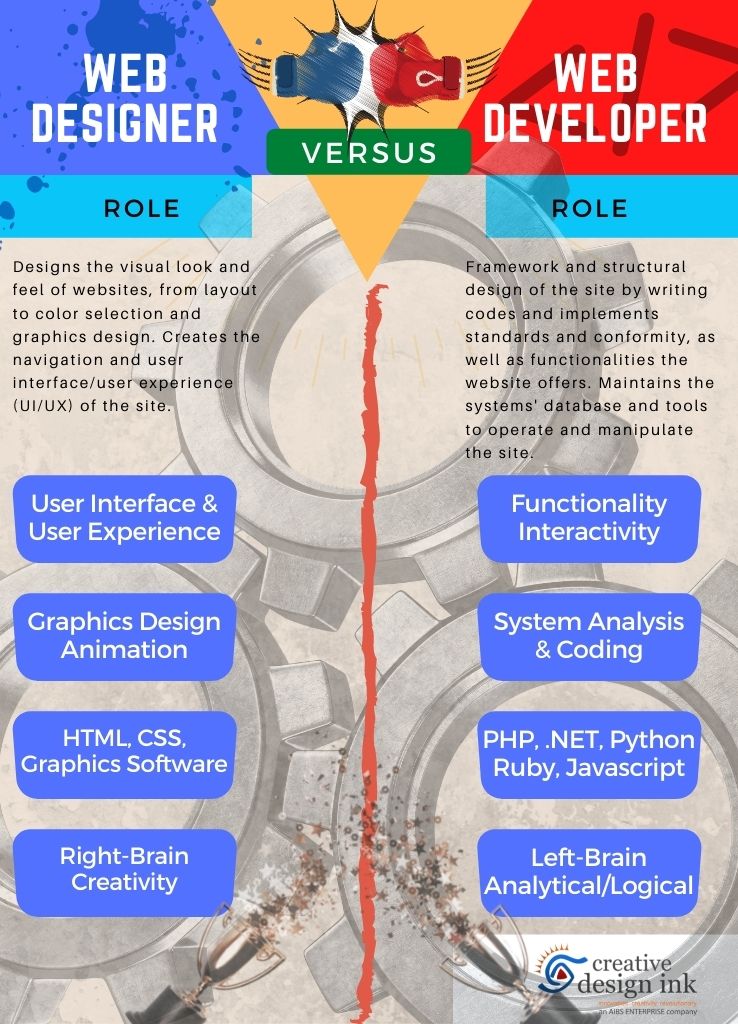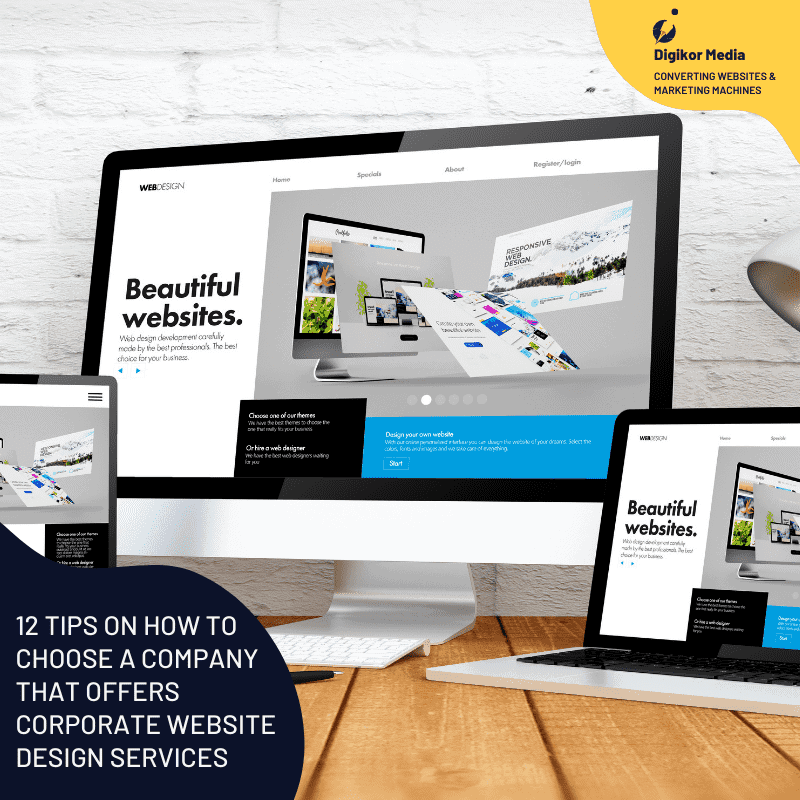
A website is a time-consuming task that can cost you both money and effort. Having the right information and tools in place can be the difference between a good website and a great website. Here are seven steps to help create a website that is both attractive and profitable for your business.
You must first define your goals. A website that supports the business's objectives, goals, or mission is considered a great website. It is important to consider the goals and objectives of your website, such as increasing profits or creating a community. It should be intuitive, easy-to-use and simple to navigate. It is possible to achieve this by using a clear, concise message and a well-organized outline.
Next, you will need to choose a domain. Your domain is the home base of your website, and it's also a signpost for the rest of the world to find you. It is also crucial to choose a domain that is unique and logically related to your business.

After you've decided on your domain, you can choose a host provider. You can also choose a template to speed up the design process. Using templates can help you maintain consistency throughout your website. You should also check for mobile devices and links.
Search engine visibility should be considered at the beginning of any project. Analytics, such as Google Analytics, can help you measure the performance of your website. Analytics can also help determine the optimal structure of your website. Analytical tools can also be used to track how your website performs in real time. This can help understand how your website changes over time. You can also use this data to make changes to your website such as improving your copywriting, or marketing strategies.
It is important to create a marketing strategy for your new website. You can promote your website in many ways, including content marketing and social media marketing. A good marketing plan will include a strategy for driving traffic to your website and building a community. Also, you should decide how often your website will be updated with new content. This is a great way to keep your website relevant and up-to-date for your audience.
Also, consider your brand tone. This can be accomplished by using colors, typography and images. Your website will feel more calm and inviting if there is whitespace between elements. Use different sizes to highlight the most important elements of your website.

You should also consider your target audience. There are 1.8 billion websites on the Internet, and you want to make sure that yours stands out from the crowd. You can do this by using keywords in your content. You can also use heat mapping to learn more about how your website is performing. Adobe Analytics, a tool that allows you to analyze the behavior of your visitors and track their visits, can also be used.
While you're updating your website, you can learn more about your audience and use this information to improve your website. You can also set up alerts and reports to do this. To see the performance of your competitors, you can also check out their websites.
FAQ
Should I use WordPress, or a website builder
A small website is the best way to build a successful web presence. If you have the resources and time to create a fully-fledged website, go for it. Start with a basic blog, even if your budget is limited. As you learn to develop and design websites, you can always add new features.
Before you start building your website, it is important to establish a primary domain. This will give you a pointer to which to publish content.
Can I use HTML & CCS to build my website?
Yes! If you've read this far, you should now know how to create a website.
You're now familiar with the basics of creating a website structure. However, you must also learn HTML and CSS Coding.
HTML stands for HyperText Markup Language. You can think of it as writing a recipe. You'd list the ingredients, instructions, along with directions. HTML also tells a computer what parts of text should be bolded, underlined or italicized. It's the language of documents.
CSS stands for Cascading Stylesheets. This is a stylesheet for recipes. Instead of listing every ingredient and instructions, you create general rules about font sizes, colors, spacing and other details.
HTML tells the browser how a page should look; CSS tells it what to do.
Don't worry if you don't know the meaning of either one of these terms. Follow the tutorials and you will soon be creating beautiful websites.
Is WordPress a CMS?
The answer is yes. It's a Content Management System (CMS). CMS allows you control your website content using a web browser and not an application like Dreamweaver, Frontpage or Frontpage.
WordPress is absolutely free! You don't have to pay for anything other than hosting, which your ISP usually provides.
WordPress was initially created as a blogging platform, but it now offers many other options such as eCommerce sites, forums and membership websites. Portfolios are also available.
WordPress is easy and quick to install. Download the file from their website, and then upload it to your server. You can then visit your domain name using your web browser to log in to your new website.
After installing WordPress on your computer, you'll need a username and a password. Once you log in, you will be able to access your settings from a dashboard.
Here you can add pages and posts, images, menus, widgets and plugins. You may skip this step if you feel comfortable editing and creating content.
However, if you prefer to work with someone else, you can hire a professional web designer to handle the whole process.
Statistics
- The average website user will read about 20% of the text on any given page, so it's crucial to entice them with an appropriate vibe. (websitebuilderexpert.com)
- Did you know videos can boost organic search traffic to your website by 157%? (wix.com)
- It enables you to sell your music directly on your website and keep 100% of the profits. (wix.com)
- It's estimated that in 2022, over 2.14 billion people will purchase goods and services online. (wix.com)
- In fact, according to Color Matters, a signature color can boost brand recognition by 80%. There's a lot of psychology behind people's perception of color, so it's important to understand how it's used with your industry. (websitebuilderexpert.com)
External Links
How To
Drupal 7: How to Use It for Web Design
Drupal is today's most popular Content Management System (CMS). It was developed back in 2003 by Dries Buytaert from Belgium. The name of the site is derived by Dirk Buijtewaard's surname and Pierre d'Herbemont's surname. Drupal was opened source in 2005. Since then there have been many versions. Today, Drupal is used by many websites and companies around the world.
Drupal is popular because of many reasons. It's free to download. Second, it is easy to customize and extend. It is well-documented. It provides tremendous support via IRC channels and forums. It can be extended via modules. Sixth, it supports multiple languages. It is also easily customizable. Eighth, it's scalable. It is secure. Tenth, it is reliable. Finally, it is supported by the community. Drupal is a great choice for your next project because of all these factors.
You may be wondering what makes Drupal different than other CMS systems. It is easy to answer. Drupal is an Open-Source Content Management System. Drupal is completely open-source and freely available for download. Drupal allows you to have full control of your website. You can add or remove pages, change colors, fonts, images, videos, etc.
If you want to create a website but lack technical skills, then you can choose Drupal. You don't have to be a programmer to build your website, unlike other CMS. All you need is to learn how to use the essential functions of Drupal. Then you will be able to modify your website according to your needs.
Drupal offers many plugins and themes that can be used to enhance your site's functionality. These plugins are a great way to enhance the functionality of Drupal. You can use Contact Form to gather visitor information. Google Maps can be used to display maps on your site. Drupal includes thousands of premade templates. And these templates give your website a professional look.
Drupal's flexibility makes it extremely flexible. Drupal supports many different modules, so you can easily add or remove them from your website without worrying about compatibility. If you need to integrate social media in your website, it can be done quickly. You can also set RSS feeds up, subscribe to e-mails, and many other things.
Drupal is extremely customizable. Drupal allows you to add custom fields and forms, manage your users, and many other features. Drupal can be used to create complex layouts.
Drupal is also reliable and sturdy. It is stable and scalable. It is also very secure. Drupal is a solid web development platform.